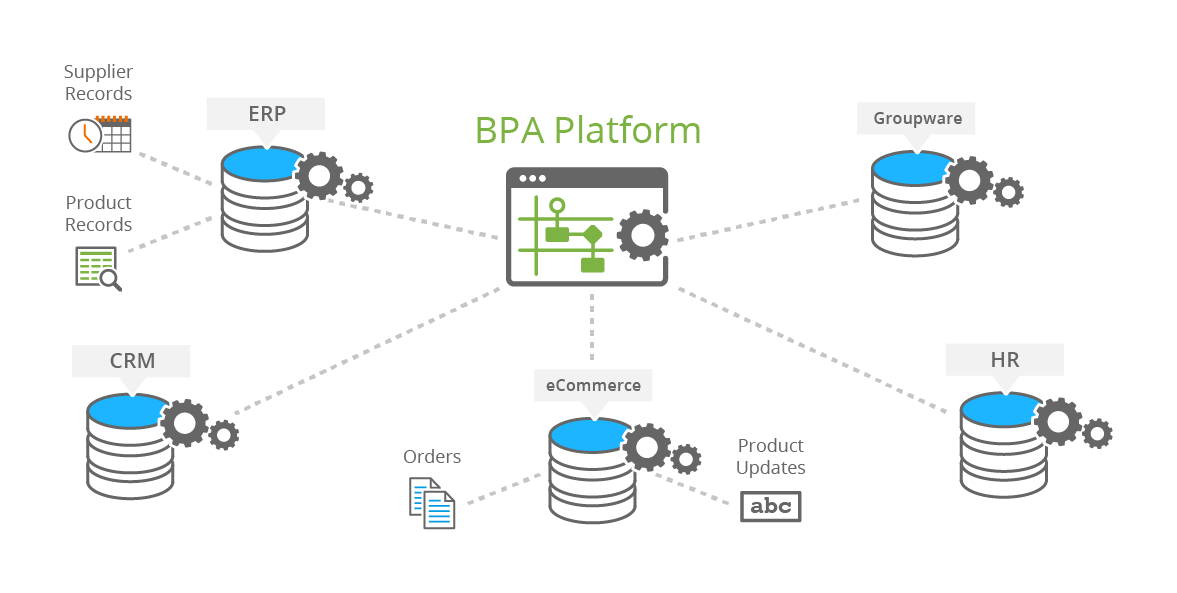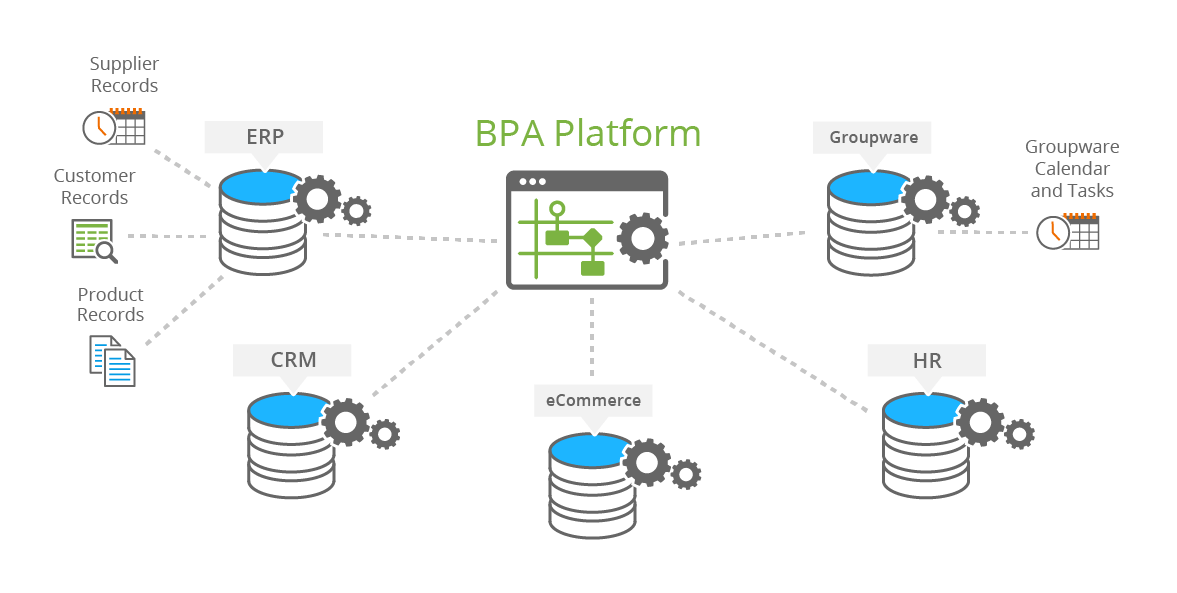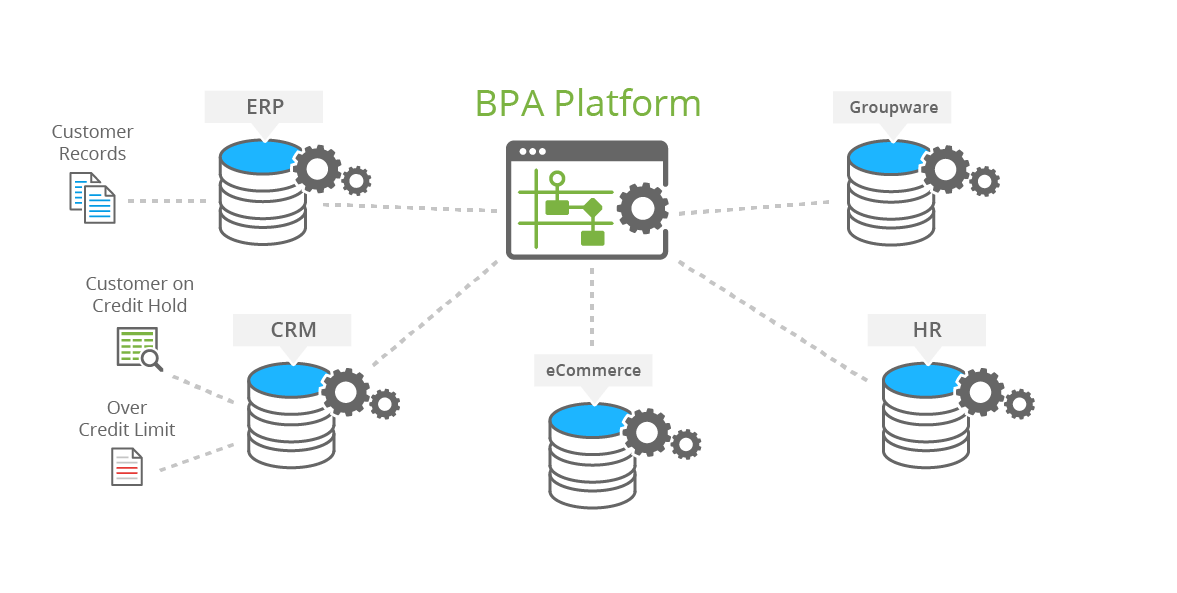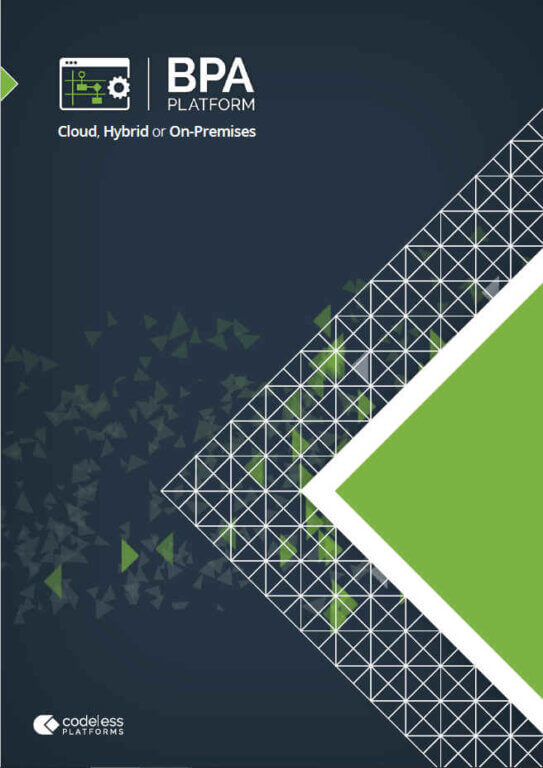- Bringing data together with application integration
- Frequently Asked Questions
Bringing data together with application integration
What is application integration?
Application integration means bringing data or a specific function from one business application to another.
Today, businesses in all sectors rely upon multiple business systems and applications to drive growth and improve company performance. These systems such as an ERP, CRM, WMS or eCommerce solutions store relevant information and transaction based data within operations and trading environments. Independent systems and applications achieve what is asked of them for a specific purpose; the only downside is that they work in isolation causing process bottlenecks and productivity issues which can put an organisation at financial risk.
Data integration and synchronisation between multiple systems and applications brings this information together, increasing data visibility and improving company performance.
What are the Common Reasons for Application Integration?
The need for Application integration within an organisation can be triggered from a number of internal or external factors such as a company merger or acquisition, the need to reduce operational costs or to enforce compliance procedures. Common reasons for application integration include:
- Company Mergers and Acquisitions: Application integration enables a variety of systems and applications to “talk” to each other to aid performance comparisons and assist future corporate management strategies.
- Enforce Compliance Procedures: Integration benefits include 24/7 enforcement of business rules and procedures to reduce exposure to risk and provide 100% audit trail.
- The need to Eradicate Cross Platform Data Administration from Workloads: Integration removes error prone, costly and repetitive tasks from employee workloads.
- High Operational Costs: Application integration streamlines business processes to improve productivity, eradicate errors and remove process bottlenecks.
- To Improve the Visibility of Business Critical Information: Integration increases visibility of data with real-time updates set to specific business rules to improve management decision making.
Including business software in an environment where it is empowered with increased functionality to integrate and synchronise their distinct information sets ensures that each platform is utilised to its maximum capability to streamline business processes and improve company performance.
Simplifying Application Integration with Data Integration Tools
Most business systems are designed to provide a flexible and easy to use frameworks with clear functionality for integration with third-party software.
A well-designed platform gives data integration tools the opportunity to offer code free data integration across practically any online or on premises information system or database store. For example:
- System integration with an eCommerce web store and sales order/stock synchronisation
- Real-time notifications and document automation e.g. Send real-time alerts to external partners via HTML or plain text emails with attachments (PDF, MS Word, MS Excel etc.) or SMS text messages
- Workflow e.g. discount approval and multi-level purchase order authorisation
Common Scenarios Associated with Transactions between Systems
There are many scenarios that can be configured using an automated and integration flow between one business system and another. This can be associated with the three following examples:
1. Transactions that occur between the sale and supply of goods and products
As an example, when considering your eCommerce process flow this is used to integrate your eCommerce store such as Magento, PrestaShop, Shopify, Bigcommerce, eBay, Amazon Seller Central etc.
Common eCommerce integration scenarios:
- Automatic insertion of sales orders, transfer of online payment and transaction ID’s into an accounting or ERP system
- Automated transfer of order statuses, stock availability, product descriptions from an accounting or ERP system to an eCommerce solution
- Automatic synchronisation of customer information between an eCommerce store and a CRM application
- Real-time placement of an order with a selected courier service(s) such as Parcelforce, DPD, Interlink Express, FedEx etc.

Seamless eCommerce integration in this scenario will result in the following benefits:
- Removal of repetitive data entry and associated human errors
- Significant reduction in order fulfilment times
- Improved customer satisfaction, increasing the probability of repeat sales
- Reduction in operational costs and the need to recruit temporary seasonal employees
2. Synchronisation of General Records Management
The automation of general records management is predominately used to aid the lead management process by synchronising sales and marketing website registration forms, including campaign data from email marketing solutions such as MailChimp, dotmailer and HubSpot.
Common sales and marketing application integration requirements and scenarios include:
- Automated capture and importing of website lead opportunities into business systems
- Automated lead capture distribution to sales teams and/or individuals
- Synchronisation of marketing lists and unsubscribes between an email marketing application and CRM solution
- Automatic creation and distribution of campaign reports
- Automated importing of campaign statistics into business systems
- Automatic creation of follow-up activities distributed to sales team members
- Automated creation and distribution of email campaigns based on business rules e.g. slow moving stock

Record management synchronisation will:
- Eradicate sales and marketing data entry and repetitive administration
- Remove repetitive reporting procedures
- Improve sales and marketing performance
- Safeguard against selective website lead follow up activities
- Process sales leads to exact business rules
3. The Day to Day Upkeep of Financial Management Data
The following scenarios enable the automation of day to day activities within financial management processes. This can include key accounting control requirements and procedures used with accounting and finance solutions and applications e.g. Creditsafe, VIES, Companies House and Credit Control Software.
Some of the common accounting and finance application integration requirements include:
- Credit Control process and report automation
- Company credit report automation (e.g. Creditsafe)
- Business credit limit approval workflow automation
- Automated VAT number checks (VIES)
- Automatic retrieval of Companies House data in response to a data driven event

Successful financial management automation will:
- Remove the risk of trading with companies who are financially unstable
- Provide 100% accurate audit trail
- Deliver complete visibility of financial information
Bringing Systems and Applications Together
Having disparate applications means that business processes become disjointed, employee productivity decreases and business growth stagnates. For example, businesses initially install accounting software or an ERP system for their business needs, over time departments implement an application that is suitable for their exact requirements – this results in disparate systems and applications which do not have the ability to ‘talk’ to each other. As the business grows, administration and the demand of real-time cross-departmental data increases. Data integration tools such as Codeless Platforms’ business process automation tools brings the information together and reduces the time spent on costly bespoke data integration projects.
Data integration tools provide organisations with the ability to simplify integration projects. Integrating disparate systems and applications enables them to improve the visibility of critical business information, increase productivity levels and drive the business forward.
For more information on Codeless Platforms’ data integration tools and flexible functionality download the brochure below or call us on +44 (0)330 998 8700.


